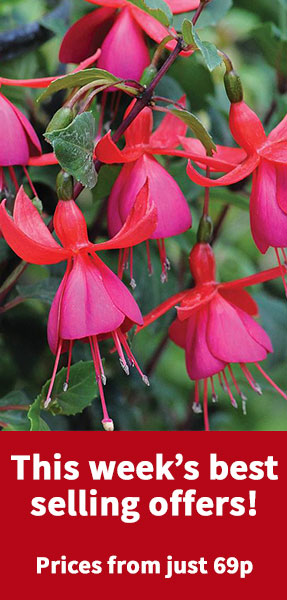
Daisies (Bellis perennis)
Many delightful varieties have been developed from the humble lawn daisy. Jean Andrews describes some in her National Collection.
The one flower that everyone recognises, whether they are interested in gardening or not, is the lawn daisy. Bellis perennis was immortalised by the poets and is either loved or hated by gardeners, depending upon their idea of a good lawn. The daisy was one of the earliest flowers to be developed in cultivation all over Europe.
Daisies grow naturally in short grassland all over Britain and so have happily moved in to colonise the lawns in our gardens. They also occur throughout the rest of Europe and also western Asia.
Although usually the ray florets are white, pinkish tints occur and they are sometimes completely pink. The blue flowered plants sometimes seen in the Mediterranean region belong to a different species.
In 1542 the German herbalist Leonhard Fuchs said that the double red and white daisies were "planted in almost every garden". In England, John Parkinson in his Paradisus of 1629 describes daisies that are white, red, speckled, striped or have red on the upperside and white underneath. His 'Parkinsons Double White' daisy is the same size as a lawn daisy but the flower has so many petals that they form a dome. The quilled variety was developed in Italy and the 'Pomponette' strain in France.
Since then nurserymen in Europe have developed the colour from white through shades of pink to salmon pink and the deepest red, and the size from the diminutive 'Dresden China' through the bedding strains of medium sized 'Bright Carpet' and 'Buttons', the long stemmed 'Nibelungen' for cutting to the showy 'Giant', 'Enorma' and the superlative 'Superb Mammoth' and 'Monsterosa Grandiflora'.
These strains can be grown from seed, the plants requiring a rich, moist soil with their beds in the sun. Frequent division is needed as they become quickly congested and woody. If they are for winter bedding they can spend the summer in frames out of the hot sun and be planted up in the autumn. The main pests are slugs and aphids. As part of the permanent planting in the garden they are happy beside the path, where their roots can be in cool, in moist soil or under roses, where they provide ground cover. Regular dead heading will keep them flowering most of the year.
As the holder of the National Collection of Bellis perennis cultivars, I am still trying to find some of the old varieties mentioned in Victorian gardening books. These are the white mottled with pink flowered 'Crown' and the red and white striped 'Victoria' which both have large flowers. Also the purple flowers 'Eliza' and the double lilac 'Madame Crousse' which is described as "exceedingly pretty" and was probably developed in France. This purple flowered strain seems to have disappeared from cultivation, but hopefully there are still a few plants languishing in an old garden waiting to be found and re-introduced to grace the cottage gardens of today.
Jean Andrews holds the National Collection of Bellis perennis under the auspices of the National Council for the Conservation of Plants and Gardens.
Source of article
Growing From Seed - Spring 1988 Vol. 2 Number 2
© The Seed Raising Journal from Thompson & Morgan
Sign Up For Exclusive Special Offers




© 2024 Thompson & Morgan. All rights reserved. A division of Branded Garden Products Limited.




